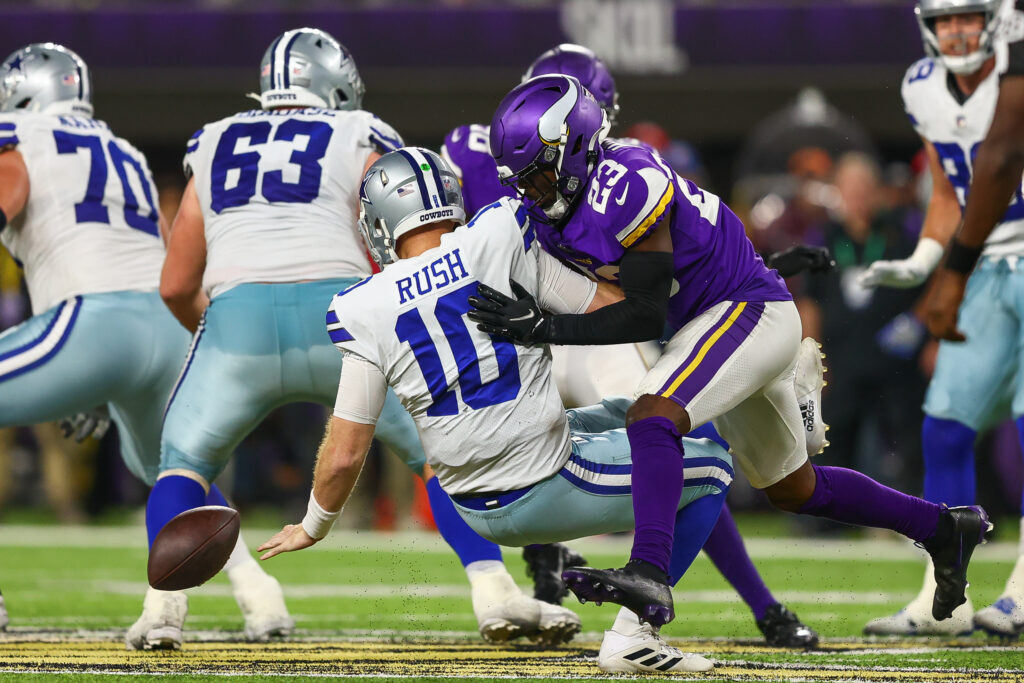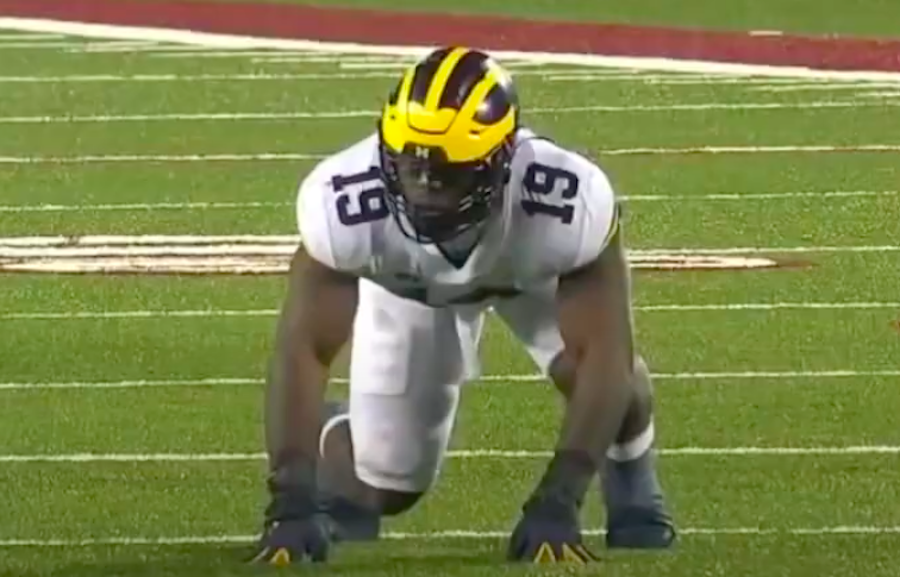MINNEAPOLIS/ZOOM — Asked if the Vikings missed an opportunity Sunday to capitalize on Matthew Stafford’s three-interception performance, Mike Zimmer had a one-word response.
“Yeah,” he said, not willing to expound much further as the Vikings dropped to 7-8.
Minnesota’s inability to cash in on mediocre quarterback play has been a running theme this year. Though the Vikings have made their uncomfortable, sub-.500 bed thanks in large part to historically bad defensive play in the closing minutes of halves, they’ve often coerced opposing passers into making reckless decisions, taking sacks and looking otherwise befuddled for long stretches of games. Nine of their 15 opposing quarterbacks have posted QBRs below 50.
And we’re not just talking about the one-hit-wonder Cooper Rush, who made his first start against the Vikings at age 28 and seemed perfectly content to be a patsy backup until the Vikings inexplicably allowed him a chance to win the game at the end and he took advantage.
Rush fumbled and threw an interception that game but still posted a 92.2 passer rating, so he doesn’t qualify for the statistic below:
The Vikings are 3-4 this season in games where opposing quarterbacks have a passer rating below 90. That’s a .429 winning percentage that is fifth-worst in the NFL, ahead of only Washington, Seattle, Detroit and Jacksonville. In Zimmer’s coaching tenure, his winning percentage in those situations is normally 30 points higher at .720.
Summed up Anthony Barr, “I think we’ve had multiple opportunities to put ourselves in great position. It just hasn’t bounced our ways some times.”
Blaming bad bounces may be an over-simplification. The Vikings’ run defense may be a more accurate scapegoat. In games against struggling quarterbacks like Baker Mayfield (59.5 passer rating) or Jimmy Garoppolo (87.8), the Vikings allowed 184 and 208 rushing yards, respectively. Same could be said against Lamar Jackson (86.7), who gifted the Vikings two interceptions but powered over them with his legs to propel a 247-yard rushing performance. And Stafford (46.8) was bailed out by a robust Rams ground game that gained 159 yards.
Slowing quarterbacks isn’t enough when you rank 28th in rushing defense.
The Vikings have seen some hit-or-miss games from quarterbacks like Garoppolo and Jackson, but they’ve also been witnesses to some truly dreadful performances. Mayfield, Jared Goff, Sam Darnold and Stafford all posted passer ratings under 65, yet the Vikings went just 2-2 in those games and could’ve lost all four if Greg Joseph didn’t hit a long field goal against the Lions and Minnesota didn’t win an overtime coin toss against the Panthers.
Then again, the Vikings are a statistical enigma.
They are the league’s co-leader in sacks, right there with the defending champion Bucs. They’re fourth in opponent’s third-down percentage, in the same company as playoff teams like Dallas, Buffalo, New England and Arizona. They are sixth in turnover margin, and the five teams above them and two teams below them are all playoff-bound.
How can a team make so many big plays on paper yet come up so flat on the eye test?
Complementary football has always been an arbitrary, nearly unquantifiable metric, but the Vikings haven’t done it all year, and they certainly didn’t Sunday against the Rams when they turned three turnovers into just 10 points and gave seven points back on special teams.
“When you get interceptions and turnovers, you want to score,” Zimmer said. “I don’t know if that’s complementary football or not, but it wasn’t good enough today.”
Takeaways haven’t been the usual elixir that the Vikings used to punish opposing quarterbacks in the past. For instance, they are just the third NFL team in history to go +2 in the take/give, commit zero turnovers and lose in three separate games. Sunday’s loss was also Zimmer’s first when his team intercepted three passes. They were 8-0 beforehand.
“With me not being on the offensive side of the ball, I can’t tell you why we couldn’t get the points we wanted off of those turnovers,” said cornerback Patrick Peterson. “But we’re a team, we’re in this together and we just have to find ways to be better in those situations. Find a way, because there are opportunities out there on the defensive side of the ball where we could’ve had more turnovers. But those opportunities slipped away from us. We could be better on both ends of the ball, converting those turnovers into touchdowns and on defense creating more turnovers.”
The Vikings simply aren’t finishers. Not on offense. Not on defense. Not in the 2021 regular season. While they’ve made life occasionally stressful for opposing quarterbacks, they’ve brought twice as much stress on themselves in their refusal to take advantage.
Their defense hasn’t been sliced apart all the time, just when it’s mattered most.






